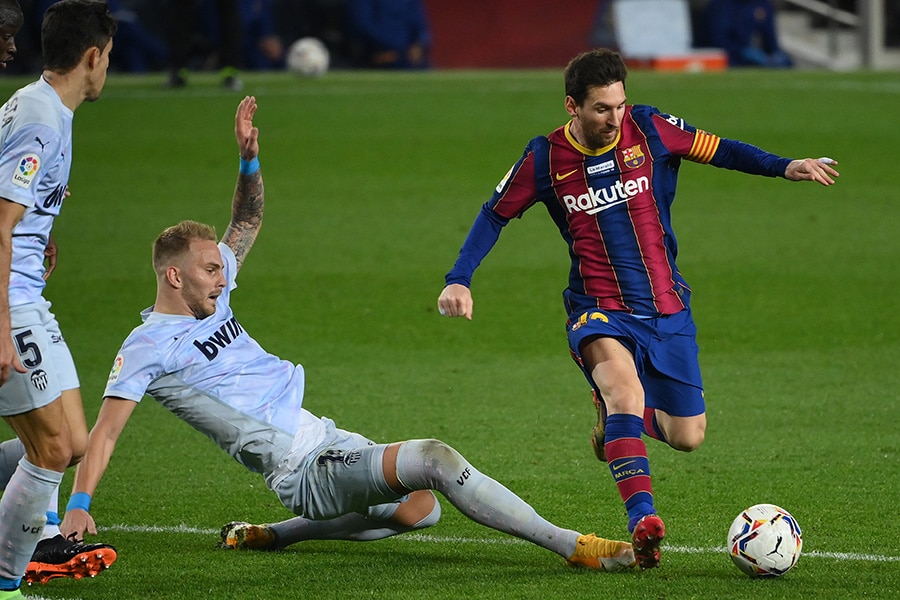
If U2 could play in India, so can a Barca or a Real: LaLiga India MD
Jose Antonio Cachaza on the rise of India as a market for the Spanish league and how it's looking to recover from the Covid-induced losses
 Valencia's Serbian midfielder Uros Racic (L) vies with Barcelona's Argentinian forward Lionel Messi during the Spanish league football match between FC Barcelona and Valencia CF at the Camp Nou stadium in Barcelona; Image:LLUIS GENE / AFP
Valencia's Serbian midfielder Uros Racic (L) vies with Barcelona's Argentinian forward Lionel Messi during the Spanish league football match between FC Barcelona and Valencia CF at the Camp Nou stadium in Barcelona; Image:LLUIS GENE / AFP
How has the new season beginning September panned out amid the pandemic and how has it impacted revenues?
The pandemic has impacted everything, not just revenues but also the look and feel of the game. For the footballers, it's quite weird to be playing in an empty stadium. Economically, clubs lost everything related to match-day revenues and all other associated revenues such as stadium tours, museum visits etc. The smaller clubs get a bigger share of their income from broadcast rights, some of them up to 85 or 90 percent. For them, the loss of match-day revenues is minimal. But to the bigger clubs, these losses can go up to 30 to 35 percent.
As a league, we aren't going to be happy till the fans are back in the stadium. But we are satisfied we were able to resume the competition during the summer, and the current season, too, has been going well. Considering the situation around us, we’ve had minimal disruptions. If we weren't able to finish last season, the impact would be around 1 billion euros cumulatively for the clubs as well as LaLiga as an organisation.
How is the league planning to recover the losses? When can you go back to pre-Covid levels?
We are working closely with Spain's ministries of sports and health to bring fans back to the stadium. It will probably be an incremental approach. There was a meeting last week and there will be meetings in early January to review the situation. But it's highly improbable that you'll see 100 percent capacity in stadiums in the current season.






